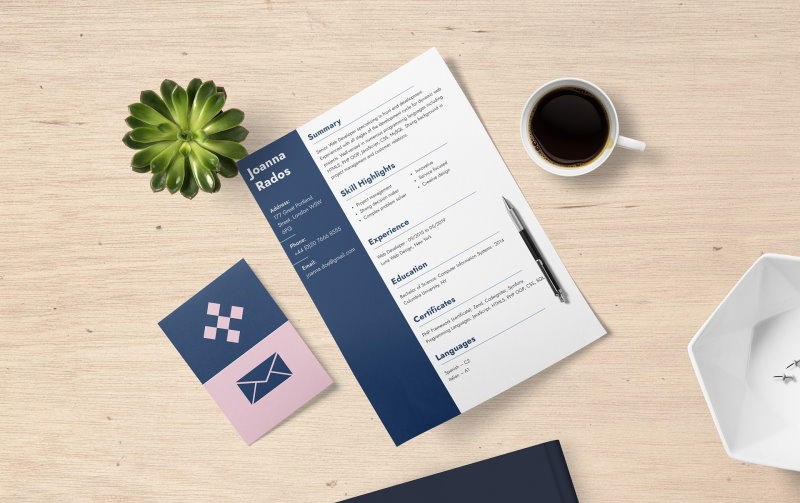
Are you searching for a job in web design or development? Well, it’s time to spruce up your resume. Before you get started, remember that your resume needs to convey your skills and experience to hiring managers quickly and easily.
Ideally, you’ll want to use a template to get your wording and formatting correct. Your resume should be concise and direct. These web design resume examples will help you build a strong, clear resume.
Once you have your base template design for your resume, it’s time to customize the content according to your experience. However, one mistake can make you seem less desirable to hiring managers.
To avoid having your resume tossed aside, avoid the following pitfalls.
1. Using too much industry jargon
Hiring managers won’t necessarily speak “web design.” If your resume is full of technical words, industry jargon, and industry-specific acronyms, hiring managers might not understand the depth of what you’re trying to communicate.
Rather than fill your resume with industry-specific jargon, find other ways to describe your intended meaning. Rather than using industry-specific acronyms, use the full phrase at the first instance and place the acronym in parenthesis immediately after.
For example, instead of using “JS” everywhere, type out “JavaScript (JS)” the first time and then you can refer to “JS” in subsequent instances.
Instead of saying “identified clients hosted in bad neighborhoods – moved them to a trusted server,” say “identified clients hosted on compromised servers – moved them to a trusted server.”
If you’re not sure what counts as jargon, refer to Smashing Magazine’s glossary of web design jargon. Some of these terms are okay to use because they’re common enough that everyone understands what they mean. For instance, hiring managers will understand terms like backlinks and content management systems. Try to use common words to describe the more complex jargon.
2. Adding unrelated experience out of context
Are you applying for a position with little or no experience? Sometimes unrelated experience on a resume can support your job-hunting efforts. However, you need to make it relevant to your desired position.
For example, say you’re applying for a graphic design position, but you don’t have any real-world experience working for a company. Say the position you’re applying for wants someone with initiative. Think about your experience and all the ways you’ve shown initiative.
Have you done side jobs for freelance clients who told you to run with an idea? That’s initiative. Did you spend time learning more skills through online tutorials? That’s initiative.
Read the job description carefully and identify character traits that you can relate to in your limited amount of experience, even with your own projects. Then, find a way to explain how you embodied those traits.
3. Including all of your past jobs
Experts don’t agree on how many past jobs you should list. Some say to list everything, while others say only go back ten years. The truth is somewhere in the middle. While you don’t want to list all of your past jobs (unless you don’t have much experience), you don’t want to short-change yourself from being seen as experienced.
If you have a lengthy work history, separate your older jobs in a section with a header titled “Previous Experience.” For these jobs, only list basic details like your title, employer, and location. Unless you had an outstanding achievement, don’t go into detail.
4. Forgetting to check spelling and grammar
In terms of typography, spelling, and grammar, your resume needs to be perfect. However, that’s not hard to achieve. Have at least two people proofread your resume for the following common mistakes:
· Missing or duplicated words. You’d be surprised at how many words get accidentally omitted and/or duplicated as you type. It’s normal and hard to see without fresh eyes.
· Inconsistent tenses. For example, writing about past jobs using present tense language.
· Passive language. For example, “New websites were built 20% faster than in the previous three years.” Instead, say something like, “Built websites 20% faster than in previous years.”
5. Including references in your resume
This one is controversial, but you don’t need to include references on your resume. Simply write “references available upon request.” If a hiring manager is interested, they’ll ask you for references as you progress through the interview process.
Excluding references will also help you achieve the goal of having a one-page resume.
Simple is better
Above all, a simple resume is ideal. Hiring managers have to make fast decisions about which candidates to ignore or call for an interview. A simple resume will give you the best chance at getting an interview.
If you’re a web designer or developer, we recommend you to check out these Professional HTML & CSS Resume Templates for creating your own resume website. You can also take a look at our collection of best free resume templates for Word.
Image by Biljana Jovanovic from Pixabay
